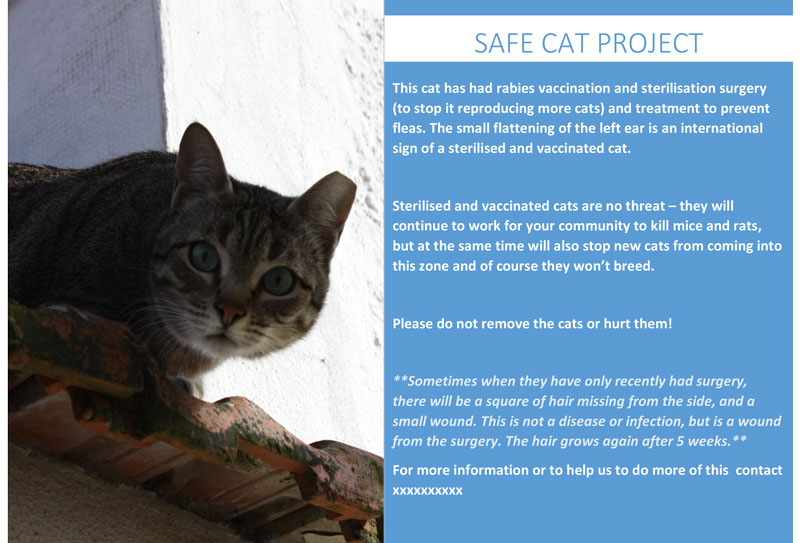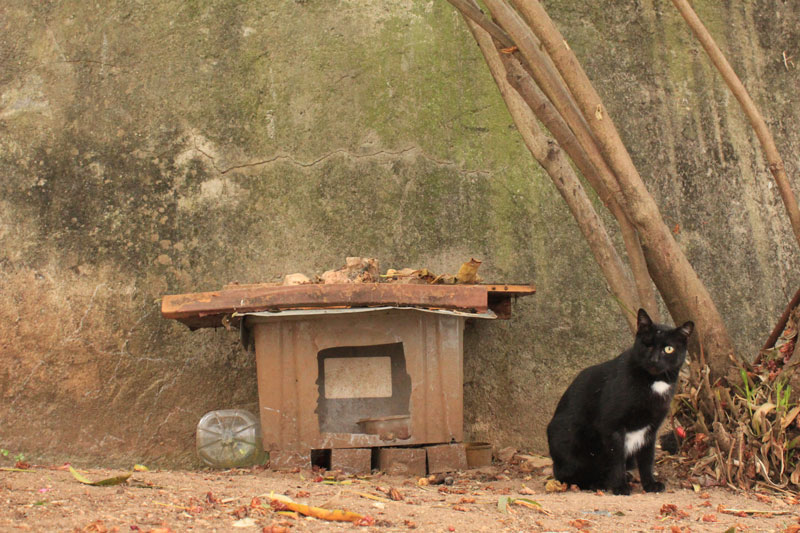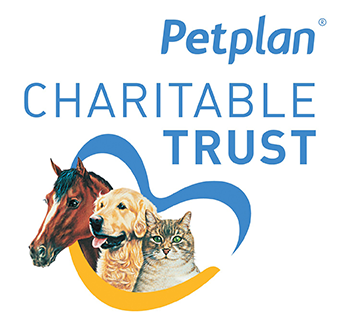Management after TNR
It is essential to provide ongoing care and supervision of the colony that has been neutered to ensure the population remains stable or reduces, and that the cats’ welfare is monitored. Keeping records for cats that have not been neutered/trapped is important so they are not forgotten and can be targeted in the ongoing maintenance of the colony. Ideally, a regular carer or group of people will be able to do this monitoring, with cover for planned and unplanned absences. They will need to maintain good relationships with the local community/neighbours.

This is an example of a poster you can use to let the community know that the cats have been neutered and are being cared for
Monitoring the colony
- Keep records for each cat and monitor for signs of absence, illness or injury
- Note any incoming cats, check in case they are lost pets and if not arrange for them to be neutered
- Maintain a record of all carers and their contact details and provide them with a means of contacting you
Organised feeding
- If the cats have not been fed previously and are surviving well from scavenging and hunting, there is no need to begin providing additional food. Feeding unowned cats is the primary cause of increasing numbers and populations growing out of control. Feeding cats that are already feeding themselves may lead to the attraction of more cats and potentially the existing cats reducing their pest control function. This may then lead to people finding their presence less positive
- If the colony is used to being fed, a feeding area should be set up to keep food fresh and protected from elements and deter wildlife/pests. It needs to be well maintained and kept clean with any waste removed to avoid causing problems of smell etc. for the community
- Food and water must be provided at consistent times – for example, evenings or morning. Dry food is easier to use and wet food can be kept for when you need to trap or monitor the cats or to add treatments such as wormers. Try to maintain a supply of the same type/brand of food if possible or make planned changeover by gradually mixing the types of food. Be aware of providing the correct amount of food to avoid cats becoming obese and developing associated health conditions

A street cat with its shelter
| Useful resources:
Providing shelter: shelter may be needed in poor conditions or for vulnerable cats. Useful ideas are on the link below and widely available on the internet. https://www.alleycat.org/resources/feral-cat-shelter-options-gallery/ In colder climates, cats can get frostbite on their ears, nose and paws. Even though free-living cats typically grow a thicker coat for winter, this is only effective if the fur doesn’t become wet or frozen which often leads to hypothermia. Shelters need to be dry and draught-proof with loose insulating material that allow the cat to burrow inside it. Straw is a good insulator for this purpose as it repels moisture and is less likely to develop mould or to rot than other materials. Using folded blankets, towels or any material that holds moisture will actually make the cat colder. Shelters don’t have to be that big, if the shelter is too large then the cat’s body heat won’t warm the shelter’s interior. |
Monitoring population
The population of a neutered colony may decrease as a result of the following:
- Natural death due to age/illness/accident
- Euthanasia due to illness/accident
- Adoption of friendly cats
- Cats moving to new sites
The population may increase as a result of the following:
- New cats join to exploit the available food source
- Abandoned pet cats join the colony
- New reproductive cats arrive
Homing
There may be some stray or abandoned pet cats within a colony. These are likely to be obviously friendly and approach people (even those who don’t have food to offer). In this case, you can ask a homing centre (if available) to help find them homes. If there is not a local culture of homing cats as pets, then it is perfectly acceptable for theses cats to be neutered and left with the colony as they have been surviving there to this point.
- If you do have plenty of homes for pet cats available, then you will need to carefully assess each cat/kitten for friendliness and suitability to live with people in a domestic home. Placing unfriendly cats with people (especially those who are first-time cat owners) results in unhappy cats and unhappy people. This is particularly so if you are working in a society where pet ownership is rare
- Testing cats for diseases, such as FIV and FelV, is advisable if you plan to home cats – especially if they will be living alongside other pet cats
- Some organisations will home cats to people who are temporary residents or to people overseas. Temporary residents may only be a short-term solution if they leave the cats behind when they return home. Sending cats to other countries is costly and time-consuming and the resources are best used to focus on better population management on the ground
The impact of COVID-19 on TNR
This video from the Alliance for Contraception in Cats and Dogs uses computer simulation modelling of free-roaming cat populations to illustrate the impact of a COVID-19 gap in sterilisation surgeries on trap/neuter/return (TNR) scenarios. Both encouraging and thought-provoking, it reveals key takeaways for those focused on humanely managing feral cat colonies during these challenging times, and how programmes can be most successful when resuming TNR.
| Useful resources:
Managing community cats – A guide for municipal leaders from The Humane Society of the United States For details of how to make a full inventory see this paper from ACC&D or via Alley Cat Allies tracking system |



